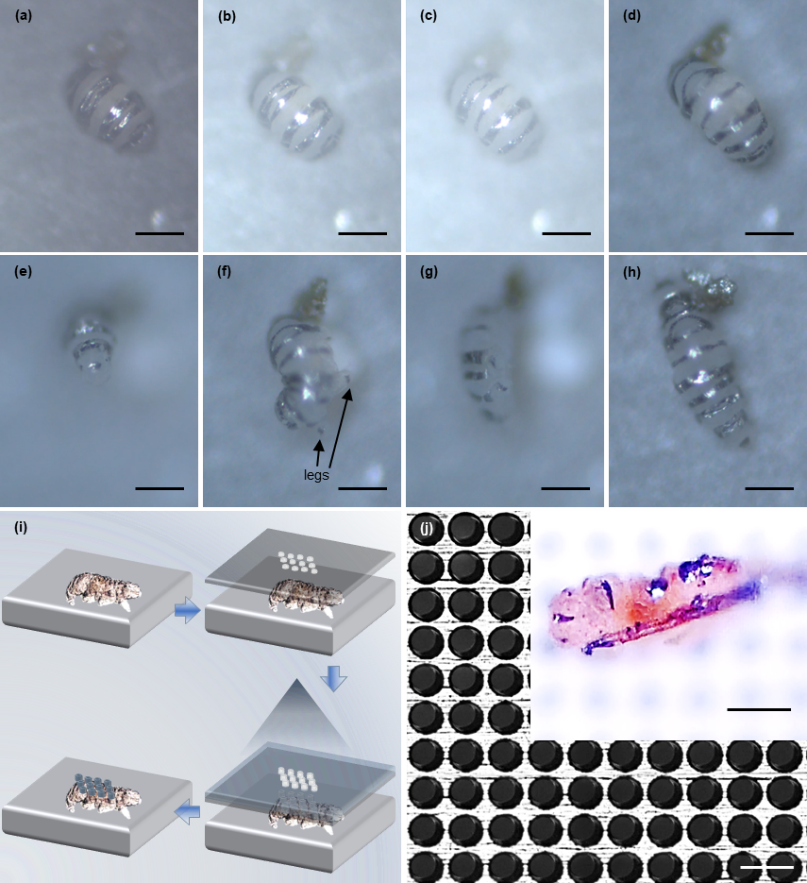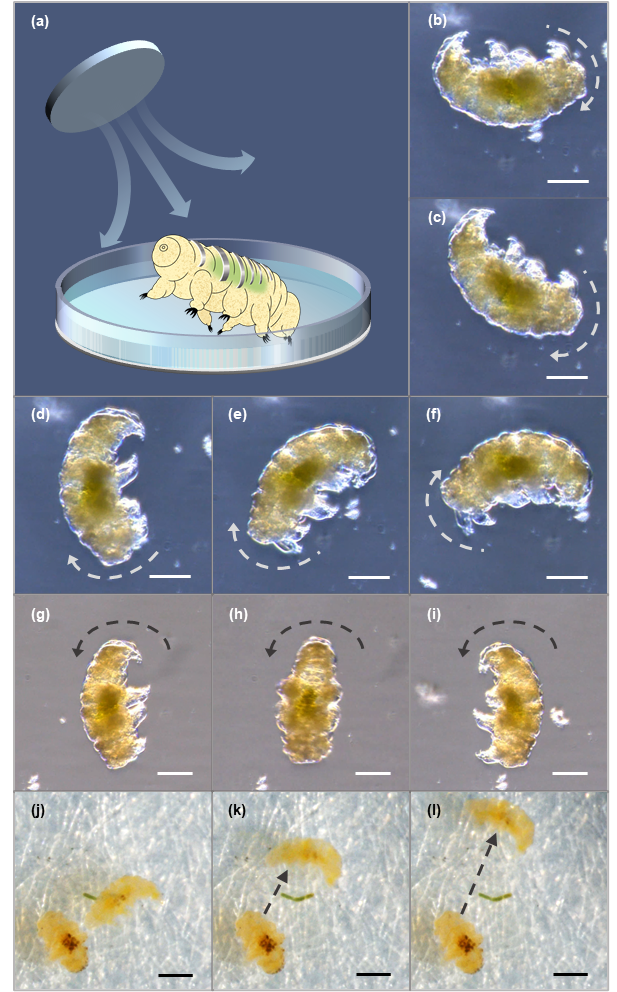A major interdisciplinary breakthrough has been achieved by the research team led by Professor Min Qin at Westlake University, bridging the fields of micro/nanofabrication and biological sciences. Doctoral candidate Zhirong Yang (Class of 2022) has had her pioneering study "Tattooing water bears: microfabrication on living organisms" officially accepted and published by Science Bulletin, a top-tier international academic journal.This study innovatively applies semiconductor thin-film deposition techniques (magnetron sputtering and electron-beam evaporation) to tardigrades, expanding the boundaries of traditional micro/nanofabrication and achieving the first controllable preparation of functional metallic micropatterns on living organisms.
Against the backdrop of rapid advancements in nanotechnology, the precise construction of micro/nanostructures on dynamic living surfaces (e.g., animal skin) remains a significant challenge due to biocompatibility and process compatibility issues. Despite progress in bioelectronic devices, the inherent conflict between conventional micro/nanofabrication techniques and the dynamic nature of living organisms makes stable integration at the bio-interface an urgent problem to solve.
Tardigrades, commonly known as water bears, are microscopic creatures renowned for their extreme environmental resilience, surviving conditions ranging from -273°C to nearly 100°C, severe dehydration, intense radiation, high pressure, and toxic surroundings. Leveraging their cryptobiotic state, the research team successfully deposited metallic films on their surfaces. Post-fabrication, the tardigrades revived under suitable conditions, while the metallic films naturally fractured into striped patterns. Using masking techniques, more intricate designs could be achieved. These patterns not only give tardigrades a distinctive appearance but also endow them with new functionalities. For instance, magnetic metal structures enable precise control of their movement—such as rotation, rolling, and planar displacement—via external magnetic fields.
This pioneering work opens a new frontier in living-organism micro/nanofabrication, offering novel pathways for bio-machine integration and demonstrating the potential of bio-inorganic hybrid systems in bioelectronics and microrobotics.
Graphical Abstract

Fig. 1. Metal-patterned tardigrades (Scale bars: a-h = 100 µm; j = 50 µm)

Fig. 2. Magnetic manipulation of tardigrades (Scale bars: b-i = 70 µm; j-l = 200 µm)
Article Link: https://www.sciencedirect.com/science/article/pii/S2095927325003615

